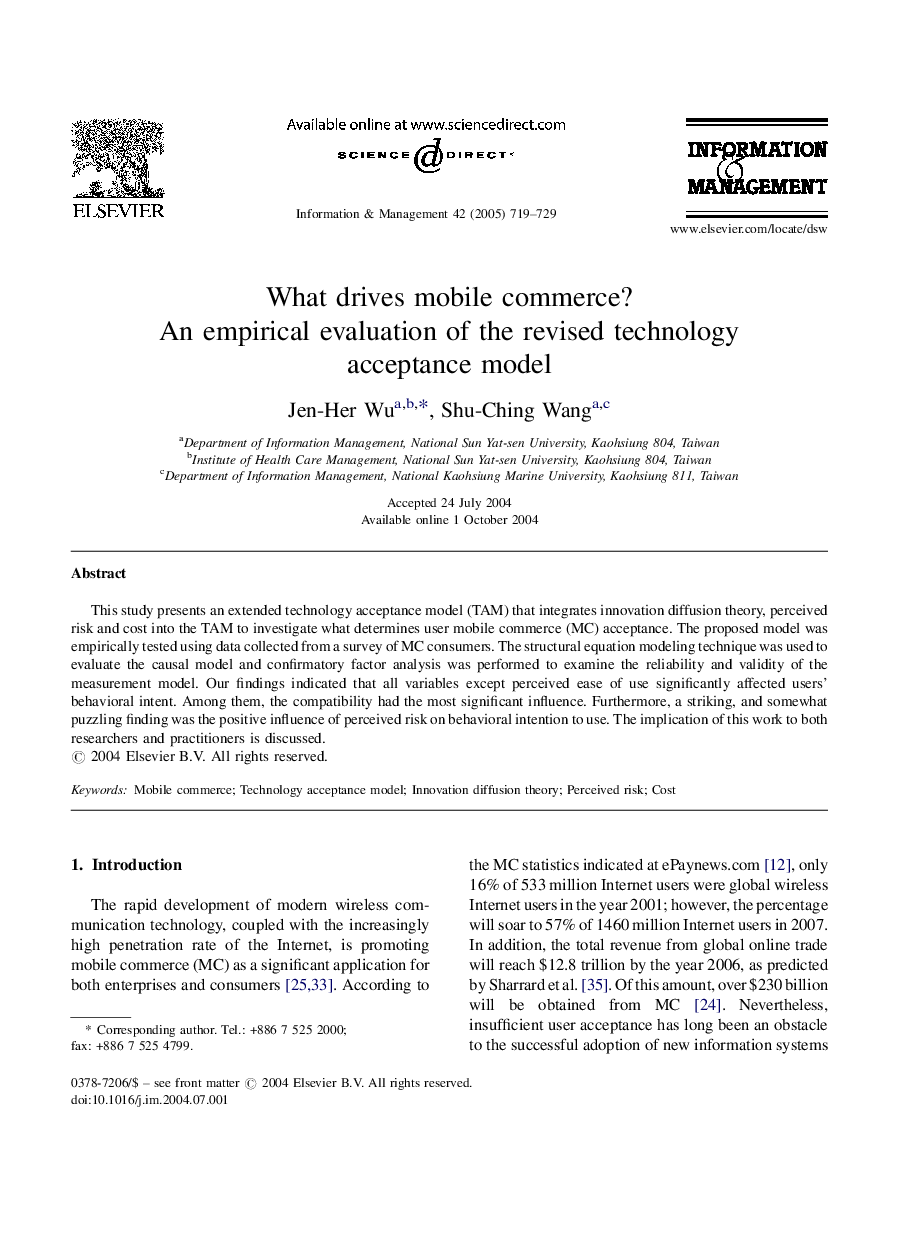| Article ID | Journal | Published Year | Pages | File Type |
|---|---|---|---|---|
| 10368167 | Information & Management | 2005 | 11 Pages |
Abstract
This study presents an extended technology acceptance model (TAM) that integrates innovation diffusion theory, perceived risk and cost into the TAM to investigate what determines user mobile commerce (MC) acceptance. The proposed model was empirically tested using data collected from a survey of MC consumers. The structural equation modeling technique was used to evaluate the causal model and confirmatory factor analysis was performed to examine the reliability and validity of the measurement model. Our findings indicated that all variables except perceived ease of use significantly affected users' behavioral intent. Among them, the compatibility had the most significant influence. Furthermore, a striking, and somewhat puzzling finding was the positive influence of perceived risk on behavioral intention to use. The implication of this work to both researchers and practitioners is discussed.
Related Topics
Physical Sciences and Engineering
Computer Science
Information Systems
Authors
Jen-Her Wu, Shu-Ching Wang,
